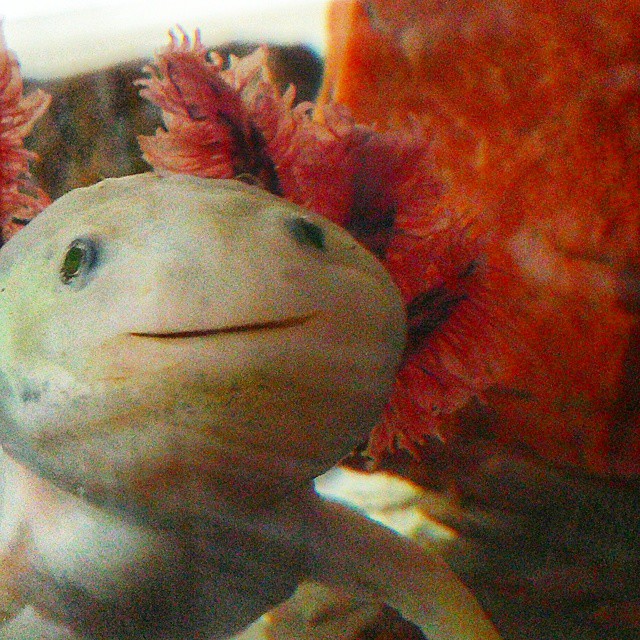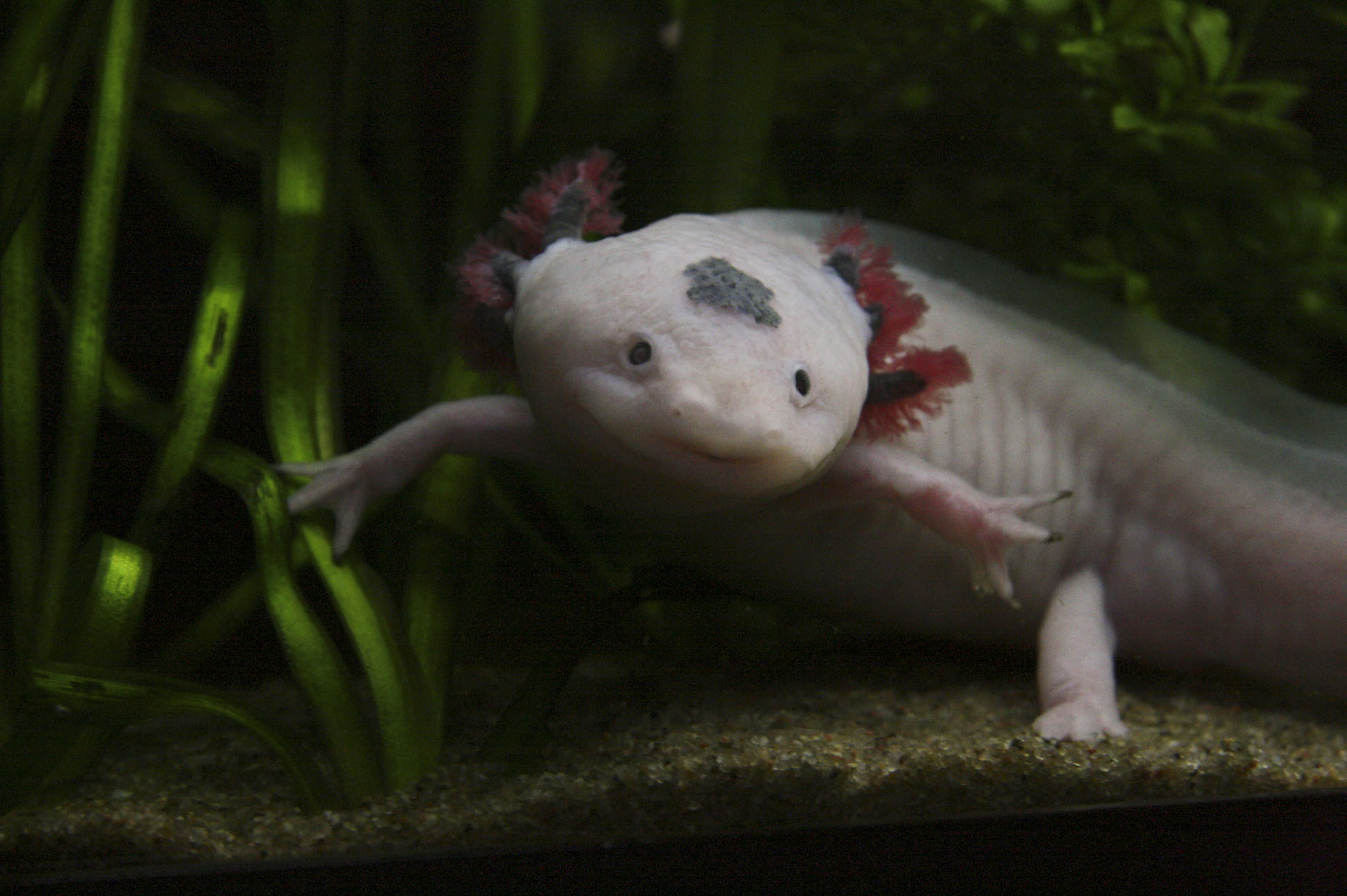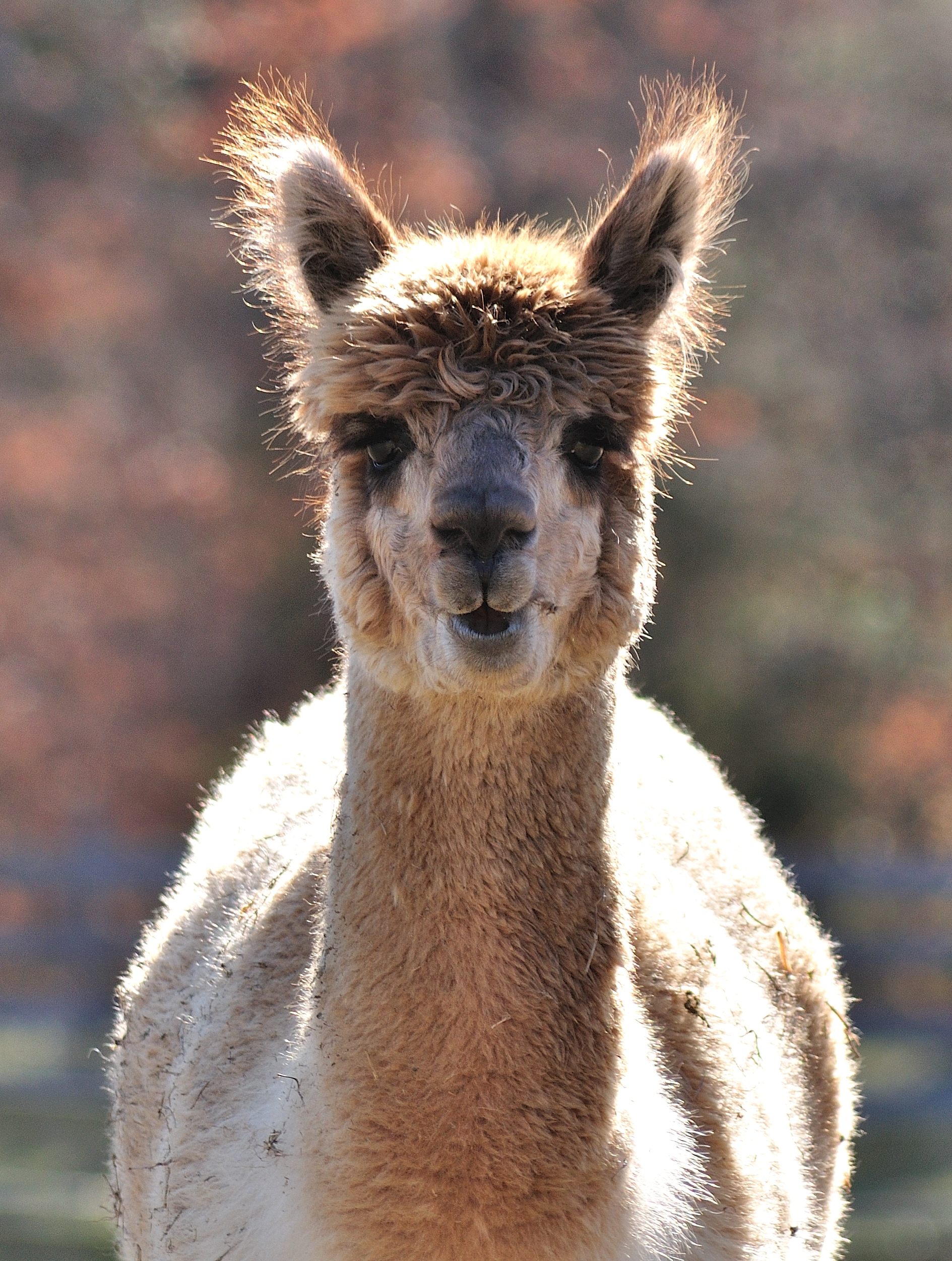Earth's weirdest creatures are genetic treasure chests
From the axolotl's regenerating limbs to naked mole rat cancer resistance, new sequencing is uncovering new possibilities
John Clare / Flickr
At the bottom of a small lake in Central America hides a hand-sized salamander known as the axolotl, which means “water dog” in an ancient Aztec language. She sits under a rock waiting to grab her daily buffet of worms and insects. As she begins swimming toward a juicy insect, a carp attacks and takes a bite out of her limb. In the scramble, a heron swoops in to join the fight and crushes her spine with a crunch of the beak. Luckily, she escapes to her rock. Within a month, her spine and limb fully regenerate, without a scar to show.
The axolotl can regenerate perfectly from nearly any damage to its body, including its spine, heart, and brain. Crush its spine, remove spinal segments, cut off any limb at any level – new tissue, nerves, veins appear.

Marcelo Albuquerque / Flickr
And yet as distant and exotic as creatures like the axolotl seem, they are inspiring solutions to very human problems, including research projects in regenerative abilities, healthcare, sustainability, and manufacturing.
For over a century, scientists have been studying the famous Mexican salamander, trying to parse the secrets behind its peculiar smile, like the Mona Lisa of amphibians. Elly Tanaka, a professor at the the Research Institute of Molecular Pathology (IMP) in Vienna, breeds and studies axolotl on a molecular level. This past month, Tanaka and a team of international researchers pieced together the axolotl genome, all 32 billion bases, that programs these superpower abilities.
Determining a genome from scratch is time-consuming and expensive. Scientists prepare and insert samples into sequencing machines to find the order of A, T, C, and G bases on hundreds of millions of individual snippets, called reads. These reads, thousands of bases long in this study, are then aligned by matching where strands overlap. In the end, the millions of overlapping reads form one long series, the genetic blueprint of an organism.
At 10 times the size of the human genome, the axolotl’s genome is the largest ever sequenced. And to complicate matters further, nearly 60 percent of the genome consists of repeating elements. To deal with the size and repetitiveness, the team developed a new algorithm, one of the major advancements they presented in their research, to put together all these snippets.

Shantel Jang / Flickr
Finishing the axolotl’s genetic puzzle, a computer-intensive process, represents just one of the many new advancements to record life’s guiding code. After determining the genome, the researchers implicated multiple genes and genetic characteristics unique to the axolotl. This pursuit to understand the genetic, regulatory, and chemical work of the axolotl's regeneration was motivated by an interest to adapt the axolotl's abilities for human use. But this paper is only the start of work to dissect and exploit this salamander’s extraordinary sequence of bases – work that has already begun with other species.
Aiding that work, sequencing genomes is getting easier and cheaper by the day. These advances make it an increasingly attractive opportunity to explore the genomic diversity of Earth’s most remarkable creatures, and to learn from the secrets they hold.
For billions of years, nature has been perfecting itself for every corner of the Earth. This idea is the foundation of a field called biomimicry, cemented in 1997 by Janine Benyus, an American author. While the nomenclature is relatively new, human history is full of famous technological advancements that were inspired by the world around us: planes and birds, televisions and solar panels by butterfly wings, lightbulbs by lightning bugs, Velcro and burs.
But as industries move towards nanotechnology and genetic engineering, we have much to learn on the microscopic molecular level. While Earth’s inhabitants have been doing research and development for hundreds of millions of years, humans have been looking at DNA for less than a century.

Smithsonian's National Zoo / Flickr
What secrets may be hiding out there? Naked mole rats don’t seem to die from old age or develop cancer, they can hold their breath for 18 minutes, and do not feel pain like other mammals do. Calico, a company owned by Google's parent Alphabet, is trying to exploit these traits to stop aging. Wood frogs and tardigrades can completely freeze and thaw repeatedly, an ability researchers are replicating to make anti-icing coatings or to preserve vaccines. Even a therapy derived from the unique antibodies (immune system proteins) of camels and llamas are about to hit the market as a treatment for blood disease. The buzzing genetic editing technology CRISPR/Cas9, shown to stop deafness in mice, is an complex system taken from bacteria that use it to defend themselves against viruses. Gecko-inspired surgical adhesives have made a splash in tissue reconstruction.

Virginia State Parks / Flickr
This "bioinspiration" presents incredible opportunities to improve upon, said Jeff Karp, a professor of medicine at Harvard Medical School and Brigham and Women’s Hospital, and a co-founder of Gecko Biomedical, a private life science company.
"I think it is important to identify mechanisms in nature that have evolved to solve problems," Karp said. "And these can be borrowed as part of solutions we aim to advance. Typically, we take a basic idea from nature and improve on it for our purposes."
Just this week, scientists sequenced one of nature’s strangest creatures, one that appeared only about 25 years ago. Female marbled crayfish, an invasive species across Europe, clone themselves every 1 per 10,000, a trait also seen in water fleas that arose 1,250 years ago. The number of new questions raised by the mutant crayfish are endless. How does it control asexual reproduction genetically, for example? How did this ability arise through evolution? And what drives differences between clones and their mothers?
Karp acknowledged that medical researchers have yet to examine the apparent superpowers of these new creatures. "We haven’t looked at this yet," he said. "We are focused more on defining medical problems and then looking to nature for inspiration.”

Delyth Angharad / Flickr
Engineering these systems on a molecular level will be even harder.
Patrick Shih, a plant biologist and postdoctoral fellow at Lawrence Berkeley National Laboratory and Joint BioEnergy Institute, stressed the early state of the field. "Currently, we only have the ability to engineer a handful of model species," he said. "I think we really don’t know what are the limitations on what we could co-opt from biology to engineer solutions to societal problems."
Given that we barely know all the alien-like creatures out there – and have yet to sequence even 0.1 percent of them – the potential of nature’s natural selection is anyone’s guess. Shih underscored this point, as well.
"We only know a fraction of all the diversity of life on Earth," he said, "so there is bound to be a lot of cool new metabolisms, systems, and components that we'll be able to discover in the future to fuel engineering efforts."
But, if past, often serendipitous, discoveries tell us anything, it's that biology's treasure chests, buried in organism's advanced genetic codes, are lurking all around the untouched corners of the Earth.
Peer Commentary
Feedback and follow-up from other members of our community
Julia York
Polar Science
University of Texas at Austin
This is a wonderful argument for why biodiversity is inherently valuable. Recently, I was made aware of a push to stop demonizing invasive species simply because they are invasive, and I think this argument has some merit, especially in the rare cases when invasive species might actually increase biodiversity. However, in the vast majority of cases, invasive species out-compete natives and reduce biodiversity – and that is a loss for us, for exactly the reasons Josh lays out here. It’s about what we don’t know that we don’t know.
My personal favorite example is the scientist who was studying deep-sea jellyfish and first described their ability to fluoresce. This led to the use of the fluorescent protein they make (called green fluorescent protein or GFP) and proteins derived from GFP into one of the most widely used markers in cell biology, neuroscience, and genetics. It’s an amazing tool which came from studying weird animals without immediate knowledge of how it would be beneficial.
I would also argue that this is why funding science only based on obvious, already known benefits to humans is a big mistake and also why it’s a mistake for some fields to only study flies, rats, or mice. You simply miss the whole wide wonderful world when you forget to consider the axolotl.